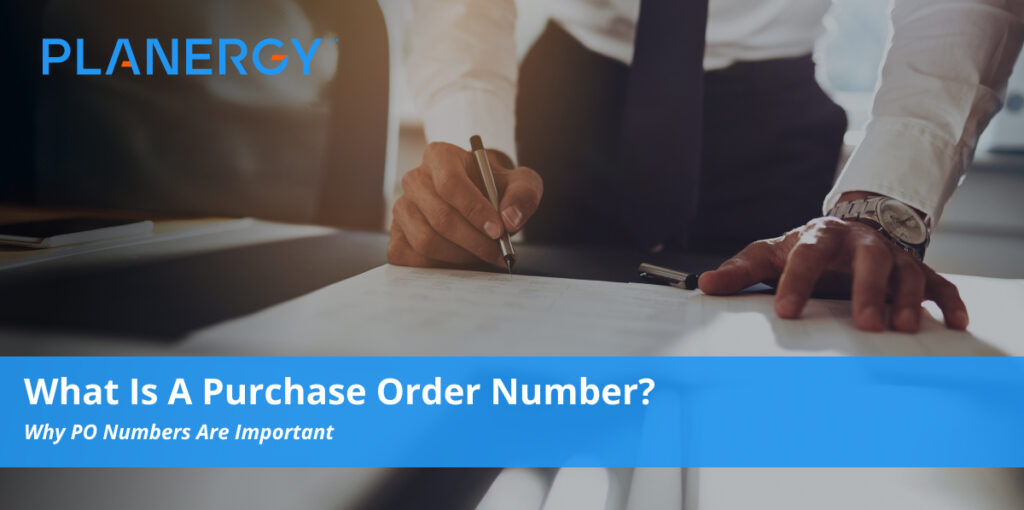When you first start a business, it can be overwhelming trying to learn all the things you need to know. For many new small business owners, it’s getting their heads around accounts that can feel the most difficult.
For whatever reason, many are intimidated by anything related to numbers, and while it’s always possible to use an accountant, payroll firm, or bookkeeper to assist you, it’s just not affordable or realistic in the early days of a business.
For the best outcome, it’s important to gain new skills and learn terminology – one such term to make sure you understand is the PO number.
What is a Purchase Order Number?
There are plenty of small businesses out there they don’t bother with purchase order numbers. If your company that sells products, or must order materials or parts from suppliers, you need to be using them.
The purchase order outlines exactly what a purchaser needs from any particular supplier or vendor. It details the delivery date, billing address, shipping address, payment terms, and so on.
The buyer creates the purchase order, which can be done with cloud-based purchase order software, to create electronic purchase orders. This approach helps with tracking and digitally submitting the orders to suppliers, which is far more productive and efficient than using a manual paper-based process.
Every purchase order should include a unique PO number to assist with referencing shipments to purchases. The PO number, along with order details, may be printed on packing slips.
Why are PO Numbers Important?
A purchase order number is a unique identifying number used to track individual orders so they can be easily tracked and referenced throughout the Procure-to-Pay process by the buyer and supplier ensuring the requested items are delivered and paid for.
In a perfect world, everyone would pay on time, and all orders would be delivered as ordered without error. Because that’s unfortunately not the case, payments can be missed, and orders mismanaged.
The purchase order is a legal document between the buyer and purchaser. Essentially, if you don’t have a purchase order, you don’t have an order from the customer.
Accepting a verbal order, common when it comes to services and small businesses, isn’t the best choice. Many small businesses don’t realize the larger businesses they’re selling to not only have purchase order systems in place but insist they are used. If the business is done without a purchase order, reconciling the invoice will be delayed because when it is received, the accounts payable department will likely question it.
Using a PO number ensures your invoice gets processed in a timely manner. Not only this, but it also helps minimize the risk of incorrect payments, since deliveries and invoices have the corresponding reference number.
It also means you have proof that goods and services were ordered. You can compare your ordered inventory to your inventory shipped, and also track when payments have been made on specific orders.
Getting paid on time is critical to the success of your small business and using purchase order numbers makes that much easier.
PO Numbers and Cash Flow
Most business owners will hate the idea of more administration and paperwork, but the PO and PO number are essential to maintain cash flow. Using a PO number system with good credit management policies can make a real impact on small business.
The policies should include assessing your customers before you begin to work with them, checking their payment history and credit score. If these don’t indicate you’ll be paid on time, you should discuss either partial or full payment up front.
If you’re satisfied, make sure you have a good collections process in place. This means invoicing on time, following up with customers when payment is late, and knowing the process to collect a bad debt – a process that requires a purchase order.
If any purchases will be taking place outside of the purchasing department, your company should require people requesting goods and services to first use a purchase requisition. The purchase requisition can become a purchase order once the department manager or someone else in charge approves the purchase.
Cloud-based software solutions allow users to create a purchase order request, also known as a purchase requisition and automatically route it to the appropriate person or team for approval, depending on dollar amount, budget, and so on. Larger purchases can be set up to require approval from multiple people. Numbers are assigned to the purchase requisition and linked to the purchase order number so there’s a nice paper trail in the event that it is needed to resolve a dispute.
Well-run, professional businesses take these actions. Purchase orders and purchase order numbers are important parts of that. As such, small businesses should aim to use these from the beginning of operations.




